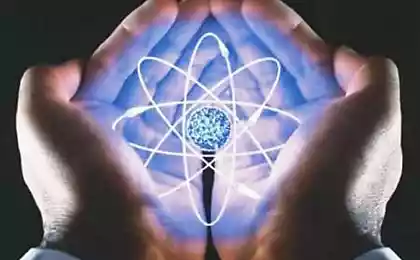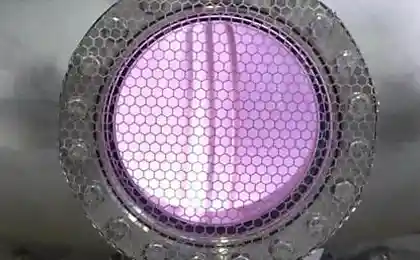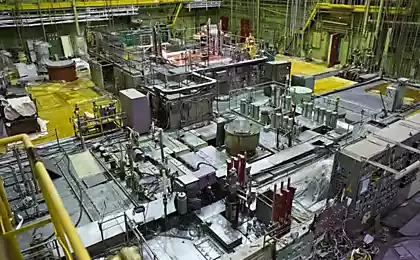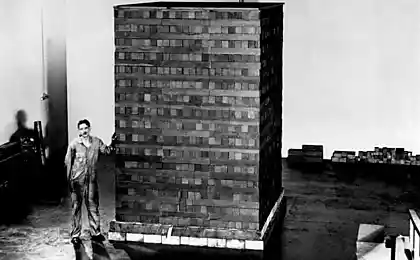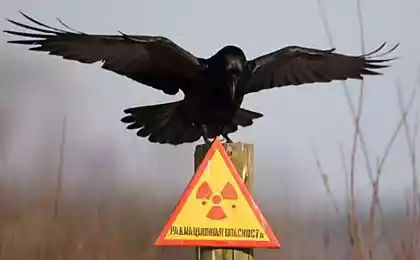465
Energy future —waste-free fast breeder reactor
Russian engineers last week in the Urals launched a reaction of fission in a fast breeder reactor HV-800. How the government expects, this means the beginning of a new era of nuclear energy in the country. This reactor is one of several operating on the territory of Russia, but it represents a new step in the field of nuclear energy – even when a country declares a large-scale production of natural gas as the main source of national income. A fast breeder reactor does not require expensive heavy water moderator to start a nuclear reaction, and since the reactor can operate without heavy design, it does not produce waste. Russian scientists estimate that the reactor HV-800 with capacity of 800 megawatts could power more than 3 million families. Also soon will appear the next more powerful model — HV-1200.
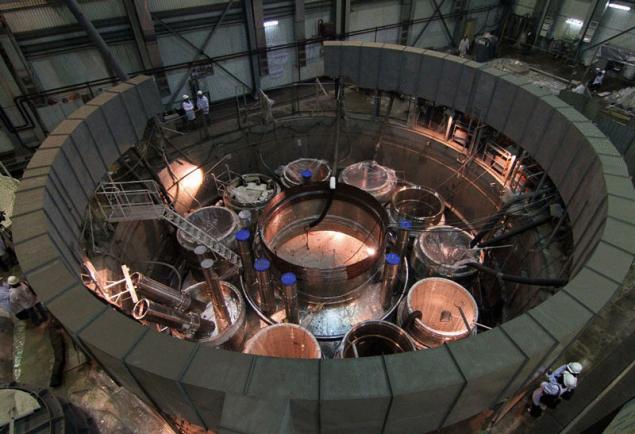
To understand the main advantages of fast reactor breeder, we need to conduct the analysis by parts of its name. "Quick", in this case, refers to the neutrons that produce fission of the atom, which leads to fission. In conventional reactors (which are called "thermal neutron reactors"), the energy of the neutrons must be reduced when they move from one material to another, as otherwise they will not impact fissile atoms and begin the nuclear reaction. "Fast" nuclear reactors overcome this problem by using special or more enriched fuel samples that collect the fissile atoms closer to each other. This solves the problem with the difficulties at the manufacturing stage and not during the combustion of fuel.
Another key word is "breeder" — is even more important. Without going into details, say that when a breeder reactor uses fuel, it actually produces enough neutrons to "breeding" fuel in excess of the needs of the reactor. Basically, this is due to the fact that a sufficient number of atoms are hit with neutrons, which in a set period of time, joining the atoms, not blow them. In modern constructions, the reproduction area of nondividing uranium-238 surrounds the core to catch excess neutrons and become fissile plutonium-239 with a remainder of some amount of uranium inside the core.
Fast breeder reactor HV-800, like all modern devices of this type uses liquid sodium as a coolant. Water would have absorbed too many precious neutrons, and liquid sodium allows them to pass through without losing energy. Liquid metal (let's not forget that sodium is a metal) it has a high heat capacity, which allows to avoid overheating. And even better that it is not necessary to compress, so the whole reactor can be simpler and safer to use. On the other hand, heated liquid sodium reacts well with oxygen, among other substances that can cause fires, if not complied with safety rules. Sodium by itself can also be a radioactive one through which neutrons pass, although the half-life of this "activated sodium" is less than one day.
Russia pins great hopes on nuclear energy. And yet it is impossible to achieve this goal: this plan was launched in 2003 and by 2020 it is planned to double the use of nuclear energy and reduce the consumption of natural gas. Partly this is done to release additional volumes of natural gas for sales worldwide: in the light of all the developing crisis in Ukraine, Russia's failure in the supply of electricity is an issue of extreme importance. All eight reactors BN-1200 (1200 MW) is planned to start in 2030, which would make Russia the only power that put everything on nuclear energy. How good a gamble will pay off both within the country and in the whole world, we will see in the coming years.
According to the materials of ExtremeTech.
Anastasiya Polyanskaya
Source: nauka21vek.ru

To understand the main advantages of fast reactor breeder, we need to conduct the analysis by parts of its name. "Quick", in this case, refers to the neutrons that produce fission of the atom, which leads to fission. In conventional reactors (which are called "thermal neutron reactors"), the energy of the neutrons must be reduced when they move from one material to another, as otherwise they will not impact fissile atoms and begin the nuclear reaction. "Fast" nuclear reactors overcome this problem by using special or more enriched fuel samples that collect the fissile atoms closer to each other. This solves the problem with the difficulties at the manufacturing stage and not during the combustion of fuel.
Another key word is "breeder" — is even more important. Without going into details, say that when a breeder reactor uses fuel, it actually produces enough neutrons to "breeding" fuel in excess of the needs of the reactor. Basically, this is due to the fact that a sufficient number of atoms are hit with neutrons, which in a set period of time, joining the atoms, not blow them. In modern constructions, the reproduction area of nondividing uranium-238 surrounds the core to catch excess neutrons and become fissile plutonium-239 with a remainder of some amount of uranium inside the core.
Fast breeder reactor HV-800, like all modern devices of this type uses liquid sodium as a coolant. Water would have absorbed too many precious neutrons, and liquid sodium allows them to pass through without losing energy. Liquid metal (let's not forget that sodium is a metal) it has a high heat capacity, which allows to avoid overheating. And even better that it is not necessary to compress, so the whole reactor can be simpler and safer to use. On the other hand, heated liquid sodium reacts well with oxygen, among other substances that can cause fires, if not complied with safety rules. Sodium by itself can also be a radioactive one through which neutrons pass, although the half-life of this "activated sodium" is less than one day.
Russia pins great hopes on nuclear energy. And yet it is impossible to achieve this goal: this plan was launched in 2003 and by 2020 it is planned to double the use of nuclear energy and reduce the consumption of natural gas. Partly this is done to release additional volumes of natural gas for sales worldwide: in the light of all the developing crisis in Ukraine, Russia's failure in the supply of electricity is an issue of extreme importance. All eight reactors BN-1200 (1200 MW) is planned to start in 2030, which would make Russia the only power that put everything on nuclear energy. How good a gamble will pay off both within the country and in the whole world, we will see in the coming years.
According to the materials of ExtremeTech.
Anastasiya Polyanskaya
Source: nauka21vek.ru



